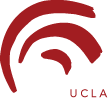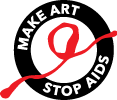
The story of MAKE ART/STOP AIDS spans from Kolkata to Los Angeles, Mexico City to Rio de Janeiro, and from Johannesburg to Mumbai.

The Story of the
Keiskamma Altarpiece
2006

The Keiskamma Altarpiece was born in Hamburg, South Africa, a small fishing town hit hard by HIV/AIDS. Named after the Keiskamma River Valley, it grew into a stunning example of how the arts can foster international solidarity, commanding audiences in North America and Europe.
The Keiskamma Altarpiece was inspired by Matthias Grünewald’s Isenheim Altarpiece, created during the German Renaissance to pictorialize deliverance from a plague. Made to fit the same dimensions, 13 feet tall and 22 feet wide, the Keiskamma Altarpiece tells the story of the resolve of the women of Hamburg to prevail in the midst of HIV/AIDS.
Dr. Carol Hofmeyr, the only doctor working with HIV patients in the area, gave the women of Hamburg needles and thread to sew pillows in order to supplement their income. When the women demonstrated uncanny skill and artistry, Hofmeyr gave the group more ambitious projects to complete, including the towering altarpiece.
Worked on by more than 130 women (and a few men), the complex art piece has several opening doors. When the doors are fully opened, they display three giant printed portraits of local grandmothers with their grandchildren (many of them orphaned). The grandmothers are not victims, but instead are pictured as nurturing cornerstones in the fight against HIV/AIDS.
The town’s lone community health educator, Eunice Mangwane, played a key role in the project, providing information and support as the community produced the series of major art works. She is pictured in the center of the altarpiece with her grandchildren. Her daughter is HIV-positive.
MAKE ART/STOP AIDS brought the altarpiece to the World AIDS Conference in 2006, and then to Chicago and UCLA, where it received its campus debut on World AIDS Day in 2006. Subsequently it was shown at three Los Angeles churches—Holmes United Methodist, Hollywood United Methodist, and S.M.U. Methodist—before continuing to tour throughout the U.S. and U.K. Sites included Grace Cathedral in San Francisco, St. James Cathedral in Seattle, Washington National Cathedral in D.C., and Southwark Cathedral in London. Sponsorship by St. James Cathedral in Chicago helped make this possible.